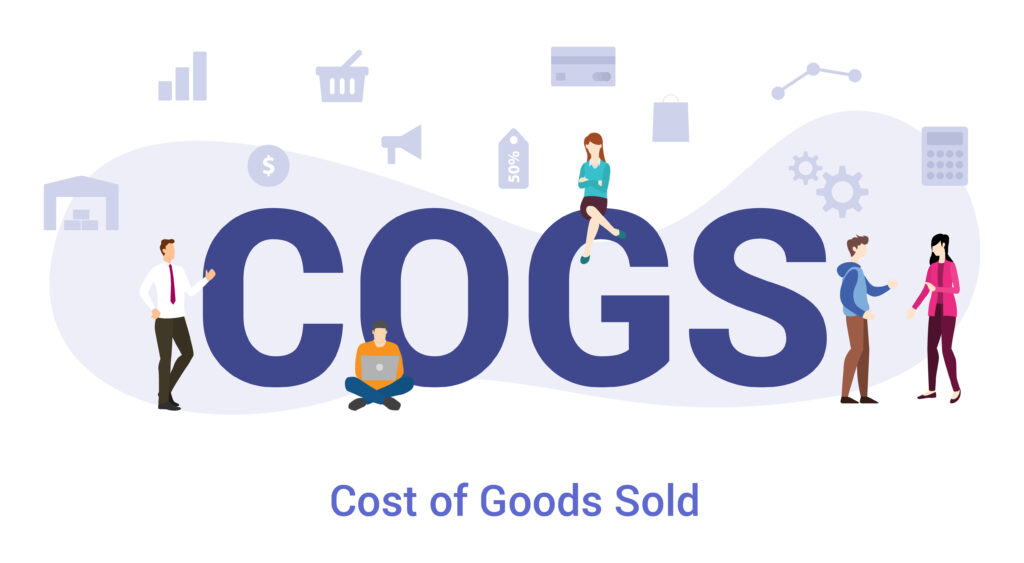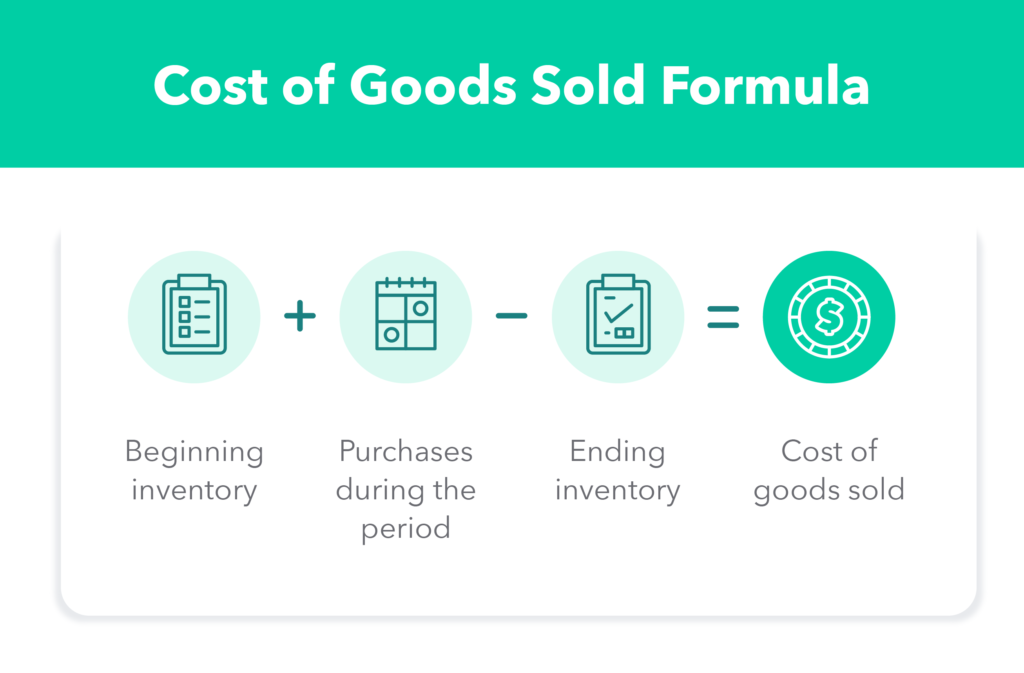What is the Cost of Goods Sold?

Table of Contents
Introduction
Imagine you have a small online store where you sell cute plush toys. To stock up your inventory, you purchase the plush toys from a wholesale supplier. Here’s a breakdown of the various costs that contribute to the COGS:
-
Wholesale Price: As a vendor, you buy plush toys from the wholesale supplier at a special price, which is usually lower than the retail price. Let’s say you buy a fluffy teddy bear for $10 from the supplier. This $10 is the wholesale price, which forms part of the COGS.
-
Shipping and Handling: When you order the plush toys from the supplier, there may be additional costs for shipping and handling. These expenses cover the transportation of the toys from the supplier’s warehouse to your store. For example, if the shipping cost is $2, the COGS also includes that amount.
-
Packaging Materials: To ensure the plush toys are presented nicely to your customers, you might need packaging materials like boxes or bags. These materials protect the toys and make them look appealing when they are shipped to customers. The cost of these packaging materials, let’s say $1, is also included in the COGS.
-
Customs Duties or Taxes: If you’re importing plush toys from another country, there may be additional fees such as customs duties or taxes imposed by the government. Let’s assume there’s a $3 customs duty on each toy imported. This amount is part of the COGS as well.
To calculate the total COGS for each plush toy sold, you add up all these costs: wholesale price ($10) + shipping and handling ($2) + packaging materials ($1) + customs duties ($3) = $16.
Remember, the COGS represents the total cost incurred to acquire the plush toys and make them ready for sale in your online store. By understanding these costs, you can determine the appropriate selling price that allows you to cover expenses, make a profit, and provide value to your customers.

How to Calculate Cost of Goods Sold?
Determine the Period You Want To Calculate
“The period” refers to the specific time frame for which you are calculating the Cost of Goods Sold (COGS). The period can be any duration you choose, such as a month, quarter, semester, or even a week. The choice of the time frame depends on the needs and requirements of your business.
For example, if you want to analyze your COGS on a monthly basis, you would gather the relevant information for each month individually and calculate the COGS for that particular month. This allows you to track the cost of goods sold over time and identify any trends or changes in your expenses.
Similarly, if you prefer a quarterly analysis, you would collect the necessary data for each quarter and calculate the COGS accordingly. The quarterly analysis provides a broader view of your COGS and can help make strategic decisions and evaluate performance over longer periods.
The specific duration of the period for calculating the COGS depends on the level of detail you need and the frequency at which you want to assess your inventory and cost-related metrics. Choosing a consistent period length is important to ensure accurate comparisons and effective financial analysis.
Remember, the COGS can be calculated for various time frames, such as monthly, quarterly, semesters, or weekly, based on your business requirements and the level of insight you seek from the analysis.

The Calculation
To calculate the COGS, you need three important pieces of information: beginning inventory, purchases during the period, and ending inventory. Here’s what you can do:
-
Keep Inventory Records: It’s essential to keep track of the inventory you have on hand and the items you purchase or sell. Nowadays, this can be done automatically using inventory management systems or software, which help you track inventory levels accurately.
-
Use the COGS Formula: To calculate the COGS, you can use the following formula:
COGS = Beginning Inventory + Purchases During the Period – Ending Inventory
-
Beginning Inventory: This refers to the value of the inventory you had at the start of the period, which can be the previous month, quarter, or year.
-
Purchases During the Period: This represents the value of new inventory you acquired or produced during the selected time frame. It includes the cost of raw materials, labor, and any other expenses directly associated with acquiring or making the products.
-
Ending Inventory: This is the value of the inventory that remains unsold at the end of the period. It includes the items you didn’t sell during the selected time frame.
- Determine the Calculation Period: Depending on your business and goals, you can choose to calculate the COGS weekly, monthly, quarterly, or annually based on the level of detail you need for your financial analysis.
Easy Examples to Understand the Concept
Example 1:
Imagine you are making beautiful handmade soaps to sell. Here’s how you can calculate the COGS:
-
List Your Soap Ingredients: Write down all the ingredients you use to make your soaps, like soap base, essential oils, colorants, and molds.
-
Determine the Amount Used: Figure out how much of each ingredient you use to make a batch of soap. For example, let’s say you use 1 cup of soap base, 10 drops of essential oil, a pinch of colorant, and one soap mold for one batch.
-
Find the Cost of Each Ingredient: Ask a grown-up to help you find out how much each ingredient costs. Write down the cost of the soap base, essential oils, colorants, and molds.
-
Multiply the Amount by the Cost: Multiply the quantity of each ingredient by its cost to find the total cost for that ingredient. For example, if the soap base costs $5 per cup, essential oil costs $2 per 10 drops, colorant costs $1 for a pinch, and the soap mold costs $3.
-
Add Up the Costs: Add together the costs of all the ingredients to get the total cost of making one batch of soap.
-
Calculate the Cost per Soap: If you can make 5 soaps from one batch, divide the total cost by the number of soaps to find the cost per soap.
For example, if the total cost of making one batch of soap is $15 and you can make 5 soaps from that batch, then the cost per soap would be $15 ÷ 5 = $3.
So, in this example, the Cost of Goods Sold (COGS) for each handmade soap is $3. This means that it costs you $3 to make one soap, considering the ingredients you used and their associated costs.
Example 2:
Imagine you have a t-shirt printing business, and you want to know how much it costs you to create each printed t-shirt. Here’s how you can calculate the COGS:
-
List Your T-Shirt Printing Supplies: Write down all the supplies you use for printing t-shirts, such as blank t-shirts, ink, transfer paper, and any other materials needed.
-
Determine the Amount Used: Figure out how much of each supply you use to print one t-shirt. For example, let’s say you use one blank t-shirt, one sheet of transfer paper, and a specific amount of ink for one t-shirt.
-
Find the Cost of Each Supply: Ask a grown-up to help you find out how much each supply costs. Write down the cost of blank t-shirts, ink, transfer paper, and any other materials.
-
Multiply the Amount by the Cost: Multiply the quantity of each supply by its cost to find the total cost for that supply. For example, if a blank t-shirt costs $5, the ink costs $2 per print, and transfer paper costs $1 per sheet.
-
Add Up the Costs: Add together the costs of all the supplies to get the total cost of creating one printed t-shirt.
-
Calculate the Cost per T-Shirt: If you can print 10 t-shirts using the supplies, divide the total cost by the number of t-shirts to find the cost per t-shirt.
For example, if the total cost of supplies for printing one t-shirt is $15 and you can print 10 t-shirts, then the cost per t-shirt would be $15 ÷ 10 = $1.50.
So, in this example, the Cost of Goods Sold (COGS) for each printed t-shirt is $1.50. This means that it costs you $1.50 to create one printed t-shirt, considering the supplies you used and their associated costs.
Example 3:
Imagine you have a business where you sell kitchen utensils, and you want to know how much it costs you to create each utensil. Here’s how you can calculate the COGS:
-
List Your Utensil Supplies: Write down all the supplies you use to make kitchen utensils, such as stainless steel, wooden handles, packaging materials, and any other components.
-
Determine the Amount Used: Figure out how much of each supply you use to make one utensil. For example, let’s say you use a certain length of stainless steel, one wooden handle, and a specific amount of packaging materials for one utensil.
-
Find the Cost of Each Supply: Ask a grown-up to help you find out how much each supply costs. Write down the cost of stainless steel, wooden handles, packaging materials, and any other components.
-
Multiply the Amount by the Cost: Multiply the quantity of each supply by its cost to find the total cost for that supply. For example, if a certain length of stainless steel costs $2, a wooden handle costs $1, and packaging materials cost $0.50.
-
Add Up the Costs: Add together the costs of all the supplies to get the total cost of creating one kitchen utensil.
-
Calculate the Cost per Utensil: If you can make 10 utensils using the supplies, divide the total cost by the number of utensils to find the cost per utensil.
For example, if the total cost of supplies for making one kitchen utensil is $5 and you can make 10 utensils, then the cost per utensil would be $5 ÷ 10 = $0.50.
So, in this example, the Cost of Goods Sold (COGS) for each kitchen utensil is $0.50. This means that it costs you $0.50 to create one utensil, considering the supplies you used and their associated costs.
Applying Excel
Cost of goods sold example.
Company X has a beginning inventory of $20000. The company purchases raw materials and uses labor to make products that sell for a total value of $5000. The ending inventory at the end of the year is $15000.
Therefore, you calculate the Cost of Goods Sold as follow:
- Cost of Goods Sold = Beginning Inventory + Purchases during the year – Ending Inventory
- = $20000 + $5000 – $15000
- = $10000

The Importance of COGS for your Business
The Cost of Goods Sold (COGS) is essential for your business for several reasons:
-
Pricing Decisions: Understanding the COGS helps you set appropriate product prices. By knowing how much it costs to produce or acquire the goods you sell, you can factor in the COGS when determining the selling price. This ensures that your prices cover the expenses associated with creating or purchasing the products, allowing you to make a profit.
-
Profitability Analysis: Calculating the COGS enables you to assess the profitability of your business. You can determine the gross profit margin by comparing the revenue generated from sales to the COGS. This information helps you evaluate whether your business is generating enough profit from each sale to cover costs and contribute to overall profitability.
-
Inventory Management: The COGS is closely tied to inventory management. By tracking the cost of goods sold, you can monitor the flow of inventory in and out of your business. This helps you maintain appropriate inventory levels, avoid overstocking or understocking, and manage cash flow effectively.
-
Financial Reporting: The COGS is a crucial component in financial statements, such as the income statement. It reflects the expenses directly associated with producing or acquiring the goods sold during a specific period. Accurate reporting of COGS provides a clear picture of your business’s financial performance and helps stakeholders understand the cost structure and profitability.
-
Decision Making: The COGS is vital in making informed business decisions. By understanding your cost structure and how it relates to revenue, you can make strategic decisions on pricing, product offerings, sourcing suppliers, and cost-saving measures. It guides you in evaluating the financial impact of different choices on your bottom line.
-
Tax Compliance: The COGS is crucial for tax purposes. It helps determine the deductible expenses associated with producing or acquiring goods, which can reduce your taxable income and potentially lower your tax liability. Properly calculating and reporting the COGS ensures compliance with tax regulations.
The COGS is important for pricing, profitability analysis, inventory management, financial reporting, decision-making, and tax compliance. It provides valuable insights into the cost structure of your business, enabling you to make informed decisions, maximize profitability, and effectively manage your operations.
COGS Methods
There are several methods available to calculate the Cost of Goods Sold (COGS). The choice of method depends on the nature of your business and the inventory management system you use. Here are three common methods used to calculate COGS:
First-In, First-Out (FIFO) with Example
The FIFO method assumes that the first items purchased or produced are the first ones sold. This method aligns with the concept that older inventory should be sold before newer inventory. It assumes that the cost of goods sold consists of the cost of the earliest items in inventory.
First-Out (FIFO) method to calculate the Cost of Goods Sold (COGS) with an example:
Assume you have a retail business that sells t-shirts. Here’s a simplified scenario to illustrate the FIFO method:
- Inventory Purchases:
- On January 1st, you purchase 50 t-shirts for $10 each, totaling $500.
- On February 1st, you purchase an additional 100 t-shirts for $12 each, totaling $1,200.
- Sales:
- In January, you sell 30 t-shirts.
- In February, you sell 70 t-shirts.
To calculate COGS using the FIFO method:
- Identify the cost of the oldest inventory first:
- For January sales (30 t-shirts): You take the cost of the oldest inventory, which is the 50 t-shirts purchased on January 1st at $10 each. The cost of goods sold for January would be 30 t-shirts x $10 = $300.
- For February sales (70 t-shirts):
- You allocate the remaining 20 t-shirts from the January 1st purchase at $10 each, totaling 20 t-shirts x $10 = $200.
- For the additional 50 t-shirts purchased on February 1st at $12 each, you take the cost of these t-shirts to complete the sales. The cost of goods sold for February would be 50 t-shirts x $12 = $600.
- Calculate the total COGS for the period:
- Add the COGS for January and February: $300 (January) + $200 (remaining January inventory) + $600 (February) = $1,100.
In this example, using the FIFO method, the Cost of Goods Sold (COGS) for the period would be $1,100.
By using the FIFO method, you prioritize the cost of the oldest inventory in determining the cost of goods sold. This method assumes that the oldest items are sold first, reflecting the order of purchases and mimicking the flow of inventory.
Last-In, First-Out (LIFO) with Example
The LIFO method assumes that the last items purchased or produced are the first ones sold. This method reflects the idea that the most recent inventory should be sold first. It assumes that the cost of goods sold consists of the cost of the most recent items in inventory.
First-Out (LIFO) method to calculate the Cost of Goods Sold (COGS) with an example:
Assume you have a retail business that sells shoes. Here’s a simplified scenario to illustrate the LIFO method:
- Inventory Purchases:
- On January 1st, you purchase 50 pairs of shoes for $30 each, totaling $1,500.
- On February 1st, you purchase an additional 100 pairs of shoes for $35 each, totaling $3,500.
- Sales:
- In January, you sell 30 pairs of shoes.
- In February, you sell 70 pairs of shoes.
To calculate COGS using the LIFO method:
- Identify the cost of the most recent inventory first:
- For January sales (30 pairs of shoes): You take the cost of the most recent inventory, which is the 100 pairs of shoes purchased on February 1st at $35 each. The cost of goods sold for January would be 30 pairs x $35 = $1,050.
- For February sales (70 pairs of shoes):
- You allocate the remaining 70 pairs from the February 1st purchase at $35 each, totaling 70 pairs x $35 = $2,450.
- Calculate the total COGS for the period:
- Add the COGS for January and February: $1,050 (January) + $2,450 (February) = $3,500.
In this example, using the LIFO method, the Cost of Goods Sold (COGS) for the period would be $3,500.
With the LIFO method, you prioritize the cost of the most recent inventory in determining the cost of goods sold. This method assumes that the most recently acquired items are sold first, reflecting the order of purchases and mimicking the flow of inventory in reverse order.
Weighted Average Cost with Examples
The weighted average cost method calculates the average cost of all the items in inventory and assigns that average cost to the items sold. It takes into account the total cost of all goods available for sale and divides it by the total quantity of goods available for sale to determine the average cost per unit.
Weighted Average Cost method to calculate the Cost of Goods Sold (COGS) with an example:
Assume you have a bakery business, and you sell different types of pastries. Here’s a simplified scenario to illustrate the Weighted Average Cost method:
- Inventory Purchases:
- On January 1st, you purchase 50 croissants for $2 each, totaling $100.
- On February 1st, you purchase 100 cupcakes for $1.50 each, totaling $150.
- On March 1st, you purchase 75 donuts for $1.75 each, totaling $131.25.
- Sales:
- In January, you sell 20 croissants.
- In February, you sell 50 cupcakes.
- In March, you sell 60 donuts.
To calculate COGS using the Weighted Average Cost method:
- Calculate the weighted average cost per unit:
- Determine the total cost of all purchases: $100 + $150 + $131.25 = $381.25
- Determine the total quantity of units purchased: 50 croissants + 100 cupcakes + 75 donuts = 225 units
- Calculate the weighted average cost per unit: $381.25 ÷ 225 units = $1.69 per unit (rounded to two decimal places)
- Calculate the COGS for each month:
- For January sales (20 croissants): 20 units x $1.69 (weighted average cost) = $33.80
- For February sales (50 cupcakes): 50 units x $1.69 = $84.50
- For March sales (60 donuts): 60 units x $1.69 = $101.40
- Calculate the total COGS for the period:
- Add the COGS for January, February, and March: $33.80 (January) + $84.50 (February) + $101.40 (March) = $219.70
In this example, using the Weighted Average Cost method, the Cost of Goods Sold (COGS) for the period would be $219.70.
The Weighted Average Cost method calculates the average cost per unit based on the total cost of goods available for sale and the total quantity of units. This average cost is then applied to the number of units sold to determine the COGS.
Conclusion
calculating the Cost of Goods Sold (COGS) is crucial for businesses to understand their production or acquisition costs and determine their profitability. The COGS can be calculated using different methods such as First-In, First-Out (FIFO), Last-In, First-Out (LIFO), or the Weighted Average Cost method. Each method has its advantages and considerations depending on inventory management and financial reporting requirements. By accurately calculating the COGS, businesses can make informed decisions about pricing, inventory management, and financial analysis. Understanding and monitoring the COGS is essential for effective financial management and ensuring the long-term success of a business.


